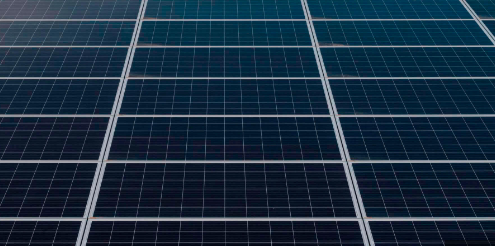Islamabad (Web Desk): The government has decided to lower the buyback rate for electricity under net metering from Rs27 per unit to Rs10 per unit, citing the substantial increase in the number of solar net-metering users and the resulting pressure on grid consumers.
The Economic Coordination Committee (ECC) of the cabinet, chaired by Finance Minister Muhammad Aurangzeb, approved changes to the existing net-metering regulations to reduce the growing financial burden on grid consumers.
According to a statement by the Finance Division, the revision of the buyback rate, which was initially set according to the National Average Power Purchase Price (NAPP) but will now be fixed at Rs10 per unit.
This decision addresses concerns regarding the financial impact of an expanding number of solar net-metering consumers on the national power grid.
The National Electric Power Regulatory Authority (NEPRA) has now been granted the authority to adjust the buyback rate periodically, ensuring that the framework remains adaptable to fluctuating market conditions. However, these revised regulations will not affect consumers who already have valid licenses, agreements, or approvals under the NEPRA (Alternative & Renewable Energy) Distributed Generation and Net Metering Regulations, 2015.
Existing agreements will continue to be honored until they reach their expiration date.
The ECC also approved modifications to the billing structure for electricity consumption. Under the new system, imported and exported electricity will be billed separately. Exported electricity will be purchased at the newly reduced buyback rate of Rs10 per unit, while imported electricity will be charged according to peak and off-peak rates, with applicable taxes and surcharges.
In addition, the Power Division has been authorized to issue proposed guidelines for NEPRA’s incorporation into the regulatory framework, pending Cabinet approval.
This move is aimed at ensuring consistency and clarity in implementing the changes.
The Power Division highlighted the impact of the record drop in solar panel prices, which has led to a sharp increase in the number of solar net-metering users. By December 2024, solar net-metering consumers had already transferred a financial burden of Rs159 billion onto grid consumers, and this amount is projected to rise significantly to Rs4,240 billion by 2034 without adjustments.
The number of solar net-metering consumers surged to 283,000 by the end of 2024, compared to 226,440 just two months earlier. Similarly, the total installed capacity of solar energy grew from 321 MW in 2021 to 4,124 MW by December 2024, reflecting the rapid expansion of solar energy adoption.
However, this sharp rise in consumers has resulted in higher electricity costs for grid consumers, undermining the government’s efforts to reduce power tariffs.
The ECC also noted that solar net-metering consumers avoid paying the fixed charge component of electricity tariffs, which covers capacity charges and the fixed costs of power distribution and transmission.
This situation has placed an unfair financial strain on grid consumers, especially given that 80% of solar net-metering users are concentrated in just nine major cities, with a significant portion of them residing in affluent areas.
This concentration has raised concerns about fairness and equity in the energy distribution system.
As per the Finance Division, the amendments approved by the ECC represent an important step in addressing the sustainability of the power sector while protecting the interests of grid consumers.


